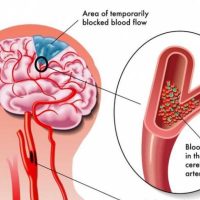Bali is an outdoor place, justly praised for its beaches and world-class surfing, its dedication to enjoying unspoiled nature. It’s benevolent climate year-round tells visitors and residents to slow down, shed some clothing, take a walk, relax. That’s why there are so many happy people here, year after year, Bali is one of the world’s top holiday destinations.
There’s a down side, too, however. As Bali is only eight degrees south of the equator, ultraviolet rays don’t have to travel as far as they do in more northern latitudes, so they deliver more UV rays per minute of exposure. Add the reflective nature of sand and water and a short visit to the beach or pool to “work on my tan” can quickly lead to lobster coloured skin.
If you’re worried about sunburn and the risk of contracting melanoma—the most serious form of skin cancer—some of the damage may already be done. It can depend upon your history and your relationship with the sun.
The bad news is that, according to www.skincancer.org, “One blistering sunburn in childhood or adolescence more than doubles a person’s chances of developing melanoma later in life. A person’s risk for melanoma also doubles if he or she has had five or more sunburns at any age.”
The question is: what does the website mean by “sunburn”? Pink, red, blisters, what? Blisters are always worrying. This may be something some sunbathers considered normal: it happens every summer, right? Burn and peel; no big deal. Listen to the dermatologist: it is a big deal.
Melanoma is not the only form of skin cancer, of course. People with a history of exposure to the sun that stretches over many years may develop non-melanoma cancers such as basal cell carcinoma (BCC) and squamous cell carcinoma (SCC). The skin may look somewhat leathery, but usually it’s not life threatening.
Melanoma is different. It attacks the melanocytes, the cells that produce brown skin pigment called melanin, which gives the skin its color. (Dark-skinned people are far safer.) Although it accounts for only a small percentage of skin cancers, it’s far more likely to spread to other parts of the body, where it can be more difficult to treat.
Here, there are many factors besides burning that put some at greater risk than others. Fair skin and light-colored eyes and hair, increased age, and having a lot of freckles or sizeable (or irregularly shaped) moles on the body may contribute as well. If a close relative is diagnosed with melanoma, there is a 50% greater chance of you contracting it, but usually it comes back to severe burning.
How to Avoid Burning
Limit time in the sun to 15 minutes the first day, increase exposure slowly, and head for the shade between 10 and 4 and always use a waterproof sunscreen with an SPF of 30+ or higher, spreading 30 gms (about two tablespoons) to all exposed skin half an hour before going outside. Repeat every two hours, after toweling off or perspiring heavily. For longer sun exposure, use a higher SPF. Always read the sunscreen label and use only as directed. Try to rethink Western ideas about how a tan makes you look healthy and cool and wear a hat.












